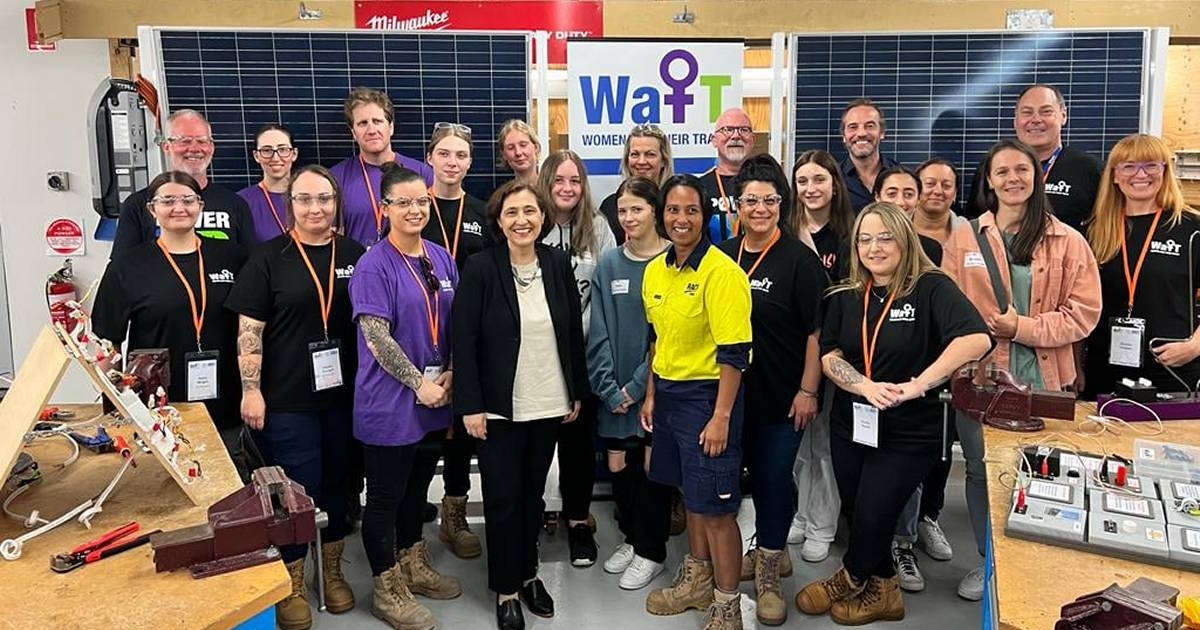Solar Victoria’s Growing Our Clean Energy Workforce initiative is focusing on lifting participation of women in the state’s renewable energy industry.
On Sunday, Minister for Solar Homes Lily D’Ambrosio announced subsidised apprenticeships in addition to professional mentoring and access to ongoing education aiming to boost the number of women participating in the industry; part of Solar Victoria’s $11 million Growing our Clean Energy Workforce package.
Minister D’Ambrosio said women are significantly under-represented in solar, making up less than one per cent of the workforce in terms of electricians, licensed electrical inspectors, solar designers and installers – and also other related trades such as plumbers, air conditioning and refrigeration mechanics.
Under the initiative, the Andrews Government will subsidise half the cost of new solar electrical apprenticeships for the first two years, and provide apprentices a tool allowance along with six-monthly incentive payments.
As well as supporting solar electrician apprenticeships, the scheme also covers apprenticeships for mechanical services plumbers, and air conditioning and refrigeration mechanics. Businesses registered with Solar Victoria’s Solar Homes and Home Heating and Cooling Upgrades programs will be able to employ apprentices under the program.
For women working in related energy industries, free or low-cost training delivered by registered training organisations (RTOs) will be made available to support them in a transition to clean energy, or to upskill in renewables. There’s also support for women working in, entering or thinking of a career in the solar industry through online workshops, conversational information sessions and professional mentoring.
“We’re supporting and empowering women while encouraging the next generation to take advantage of the ever-growing opportunities created by Victoria’s thriving clean energy sector,” said Minister D’Ambrosio.
Further information on these and other aspects of the Growing our Clean Energy Workforce package can be found here.
Female Participation Within Australia’s Clean Energy Sector
Results from the first ever survey on diversity within the Australian renewable energy industry were published in October last year by the Clean Energy Council. The results indicated Australia’s clean energy sector continues to be a male-dominated world, with more than 60 per cent of the workforce identifying as men.
Female representation across various categories:
- STEM (Science, technology, engineering, and mathematics): 31%
- Non-STEM: 47%
- Administrative roles: 62%
- VET (Vocational education and training) qualified: 22%
- Senior leadership/executive roles: 32%
- Board positions: 19%
“Female participation is very low in the trades. This is not unique to clean energy, but we can work with relevant stakeholders to help improve the attractiveness and retention of women in the trades.”
There may still be a fair bit of work needing to be done on general attitudes. One survey respondent commented:
“Being a female meant I was spoken over, people redid my work because they didn’t believe that I’d already done it and people didn’t believe me until a man told them the same thing.”
The CEC’s “Women In Renewables” initiative has been running for some years now. The program includes annual scholarships aiming to enable professional development and a mentoring program for women.


 RSS - Posts
RSS - Posts



If Victoria values gender equality in employment will it also be promoting male professionals (44.7% as of 2019-2020 ABS figures), or male community and personal care workers (29.7%)? Will it encourage retail to hire males (only 44.8%), accommodation and food services (45.5%), education and training (28.4%), or health care and social assistance (22.2%)? What about encouraging males to pursue higher education? Of those aged 15-64 in 2020, 22.7% of females held a bachelor’s degree, but only 17.5% of males held the same.
Okay I admit none of this is as bad as less than 1%, but perhaps there are natural gender divides that result in different life choices – same as the so called wage gap. Or is this too radical and politically unacceptable these days?